How To Spend a Weekend in Oviedo, Spain: Things To Do in Asturias’ Chilled-Out Capital
This website uses affiliate links which may earn a commission at no additional cost to you. As an Amazon Associate I earn from qualifying purchases.
Updated: 7th January 2023
Cradled in the verdant hills of northern Spain’s Asturias region, Oviedo is a pretty, peaceful and mainly pedestrianised city break. Not only do the mountain backdrops dazzle, but so do the streets – this is regarded as Spain’s cleanest city.
If you’re seeking a city in Spain to rush around and visit countless sights, this isn’t the one. But, if you want a laid-back city break with a couple of museums, a different culture to the country’s south, and excellent food and drink, you’re on to a winner.
From hearty fabada stews to indulgent cachopo, the regional dishes impress. You can also expect the more than 40 kinds of cheese and local sidra to feature heavily during your weekend, too – this is the Spanish capital of cider, after all.
Here’s how to spend a long weekend in Oviedo, Spain.
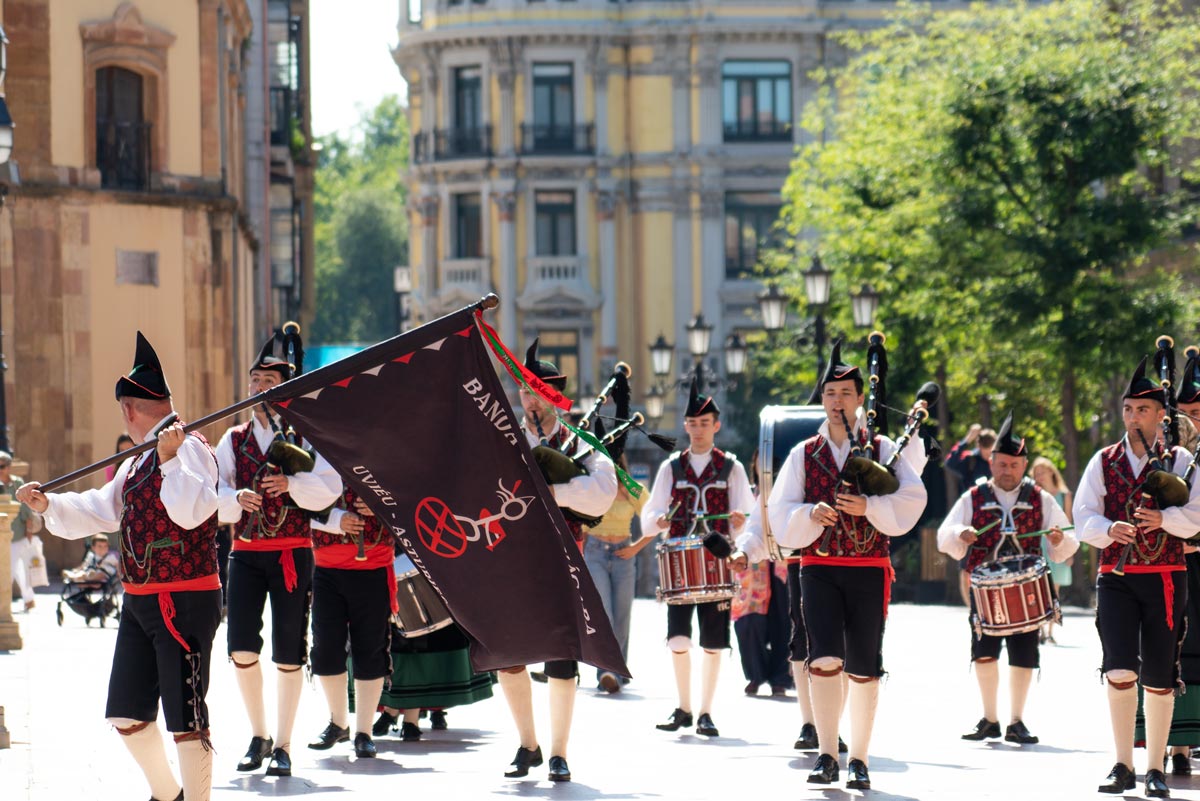
Arrival: Friday night
My suggestions for this weekend in Oviedo are based on a Friday night arrival, and either a Sunday departure, or with an extra day for a side trip, extending your visit to Oviedo into a long weekend. All suggestions should work with the varied opening hours; however, it’s always best to check closing times (and remember Spain’s afternoon siestas) in advance.
If after check-in at your hotel – see my suggestion here – you’re looking for something low-energy to do this first evening, then it’s worth checking out the Campoamor Theatre’s programme. This stunning space is home to Spain’s second-oldest opera and certainly makes for a cultured start to your weekend in Oviedo.
Day one: things to do in Oviedo
After grabbing a lazy breakfast – Carbayones, a local egg and almond pastry, make for a sweet start to the day – dive into Spain’s art scene.
Morning: See Fine Art at the Museo de Bellas Artes de Asturias
Free | Closed Monday | Accessibility: adapted access to parts of the museum | Website
Encompassing three different buildings – two of which are heritage – this Fine Arts museum holds an array of some 15,000 pieces. For a regional museum, it’s mighty impressive and brags one of Spain’s best collections.
Works from famous masters such as Goya, Picasso and Dalí are on display, along with regional artists who you may not be familiar with. If you want to tour all three buildings, this will likely fill your whole morning. The museum closes for lunch at 2 pm.
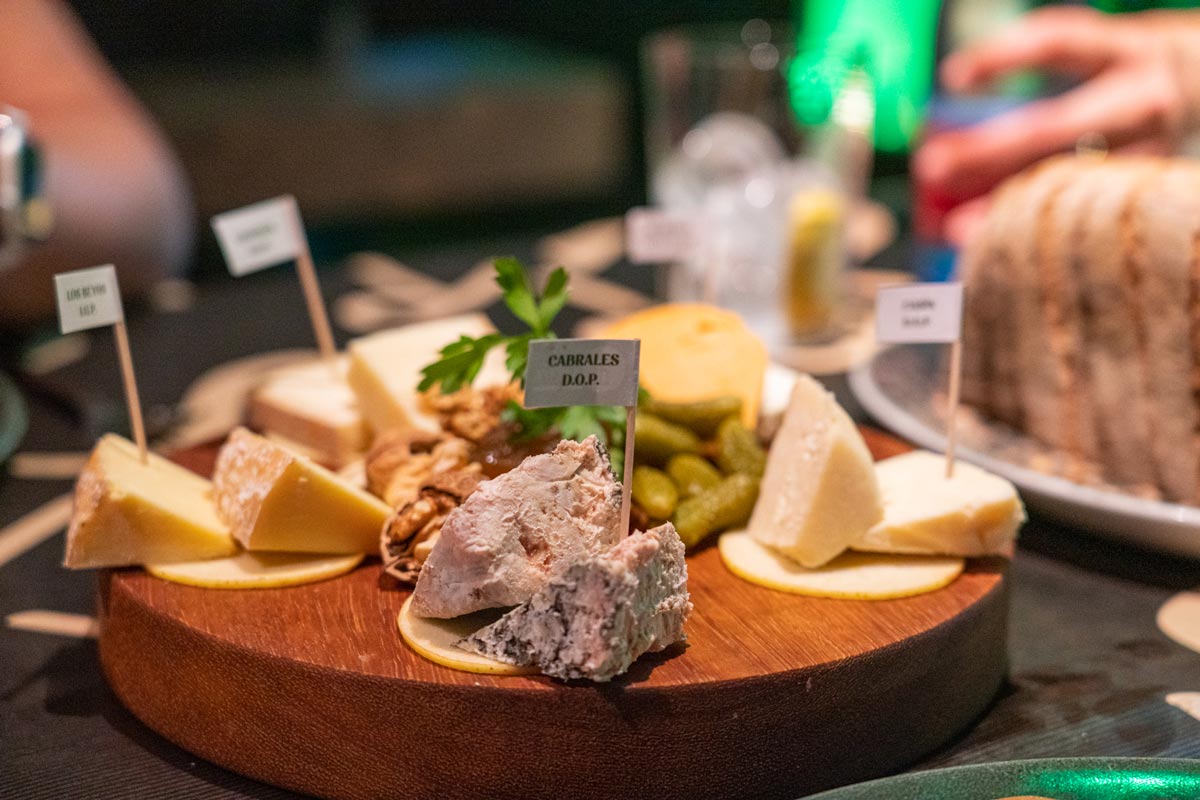
Lunch: El Fontán, Cheese and Moscovitas
A short walk from the Fine Arts Museum is Plaza de El Fontán, a perfect place to enjoy lunch.
Before sitting down to enjoy some local delicacies, it’s well worth taking a little stroll around Mercado El Fontán. The market closes at 3 pm on Saturdays, and it’s shut all day Sunday, so align your timings.
While it’s not the largest market, you’ll see the full range of Asturias cheeses and local specialities. It’s a good place to pick up items to take home, such as the beloved native white runner beans. If you want to take some cheese away, it’s better to ask for a wedge of the larger wheels or blocks and have this vacuum packed. They are usually of better quality than the small, individual wheels.
Next door to the market is El Fontán square. Both inside the courtyard and around the 18th-century building, where trees and a bright-yellow facade create a postcard-perfect view, you’ll find places to enjoy a typical lunch. For a pricey sweet treat afterwards, head to Rialto and pick up a box of moscovitas, a local biscuit.
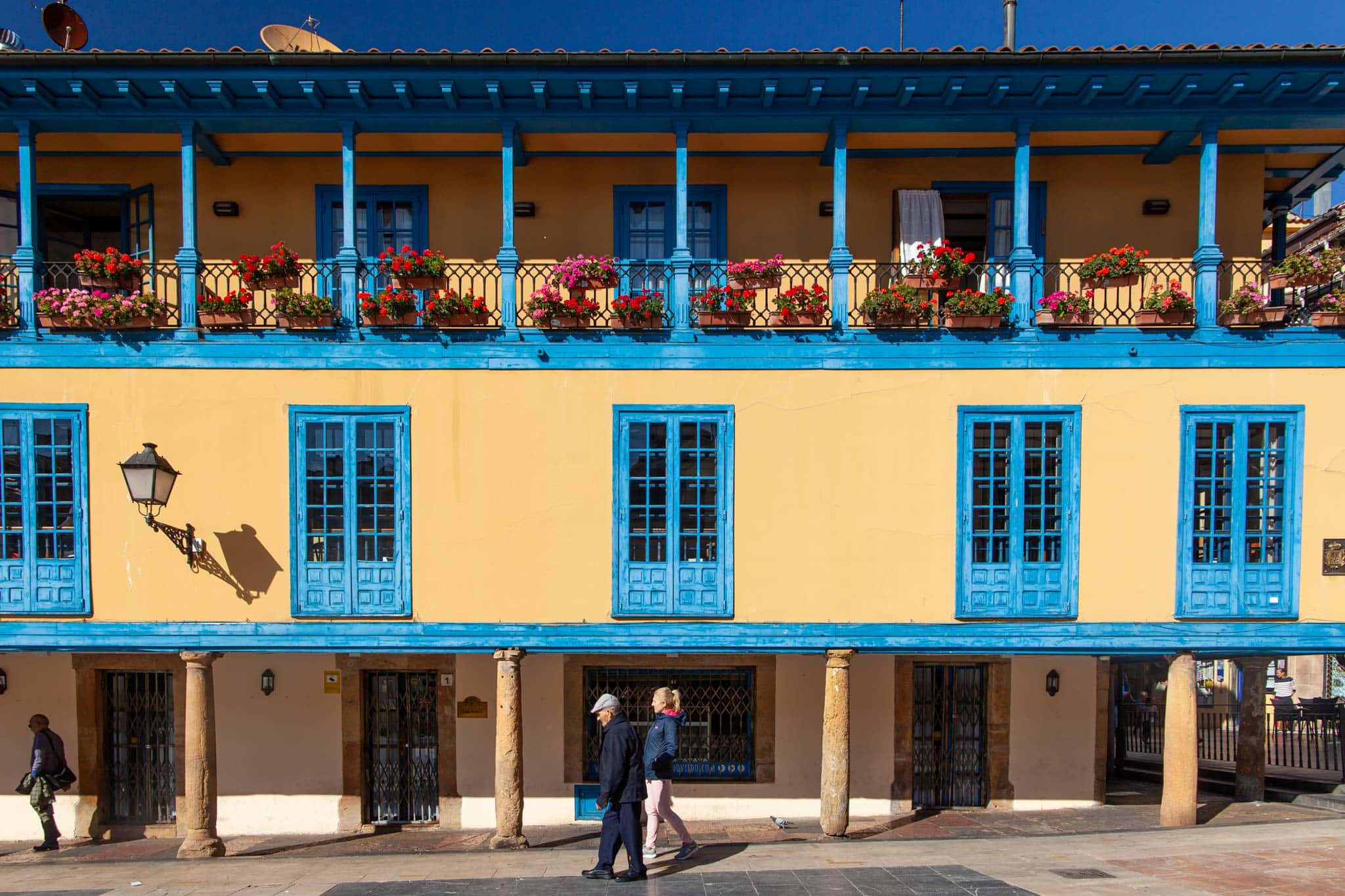
Afternoon: Self-guided statue-focused walking tour
Oviedo is a city of statues. There are around 100 outside figures dotted around the city. From busts and bums to notable figures, the sculptures provide something of a walking tour. So, keep your eyes peeled as you explore the city.
You’ll also want to keep an ear out for the Gaita asturiana. On the weekends, walking bands often play this local bagpipe-style instrument, adding a typical soundtrack to the city.
From El Fontán, head to Plaza de la Constitución. Flanked by the impressive Town Hall, it’s one of many pretty squares in the city. If you want to research some day trip ideas, you’ll also find the Asturias tourist office (which closes at 5 pm). From here, continue to Plaza del Paraguas, and just behind, you can spot the remains of Oviedo’s medieval walls.
Returning to Plaza de la Catedral (where the Fine Arts museum was), take a peek inside the Cathedral of San Salvador of Oviedo. Personally, I find the ornate details on the outside the prettiest.
From the square, it’s a straight road to San Francisco Park. This green lung in the centre of the city is worth a stroll, and you’ll find one of the city’s most beloved statues here, Mafalda, an Argentinian cartoon character. Being one of the first city’s in the world to be nearly fully pedestrianised in its core, strolling Oviedo’s streets is a real joy.
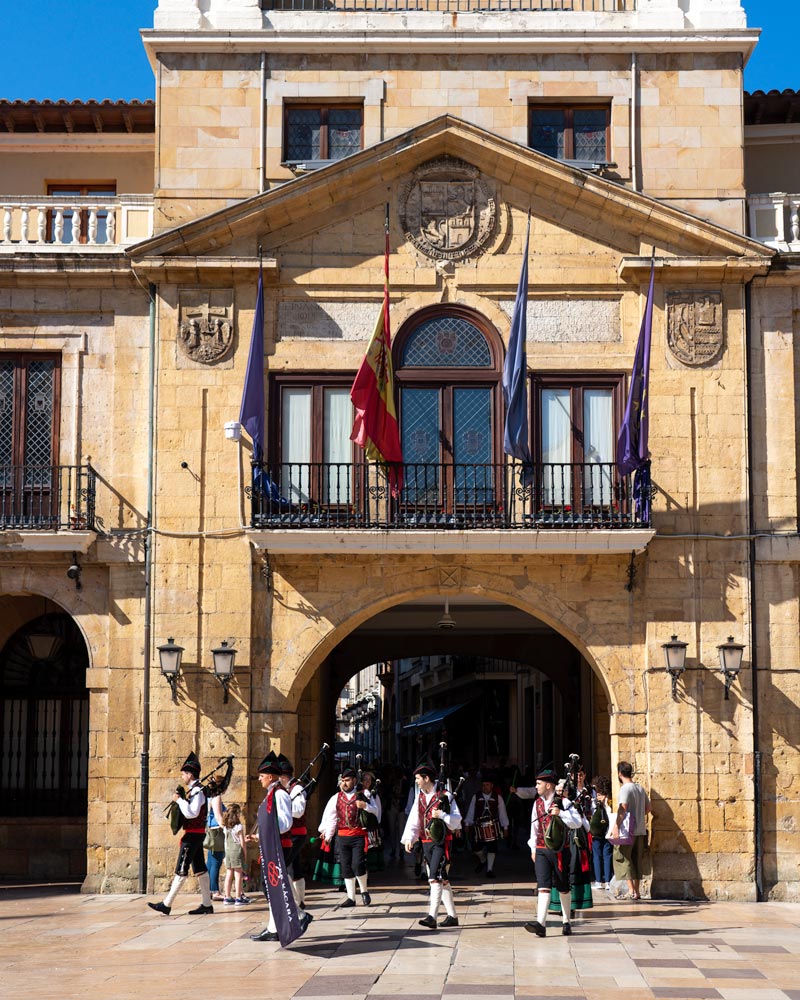
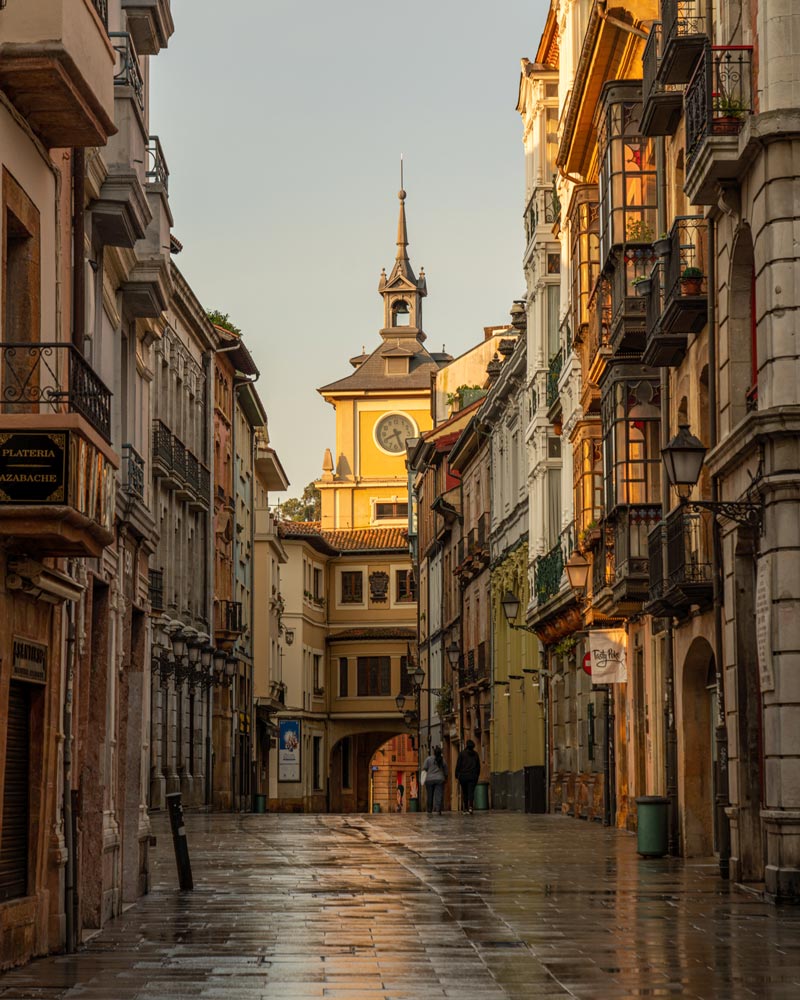
Evening: Sidrería Tierra Astur, followed by more cider!
Even if you aren’t a fan of cider (sidra locally), it would be criminal not to try it in Oviedo. Chigre (cider houses in Asturian) are dotted around the city, ranging from the typical to the funkier. One of the latter is Sidrería Tierra, a local chain with a few spots. I’d suggest the El Vasco branch for the most surreal experience.
I didn’t think Oviedo’s love for cider had any surprises left for me until entering this bar-cum-restaurant constructed from literal cider. With around 100 staff rushing around, cider being poured from a high with droplets landing on the sawdust-covered floor, and some 18,000 bottles decorating the place – with even more chilling in the streams running through the dim-lit venue, there is a LOT going on!
Cheese is a prominent feature on the menu, and there are plenty of other local and hearty dishes. But, let’s be honest, this is a place you come for the sidra and spectacle rather than first-class grub.
In these bars, the natural cider is uncarbonated, then expertly poured from high by an escanciador. This style of pour helps add air to the beverage as it hits the glass. Only a small amount is poured at a time and needs to be drunk instantly while the bubbles are still forming. It’s fun, traditional and very entertaining – but it takes some getting use to waiting for a new pour every time you want a sip
To continue the party into the early hours, head to Calle Gascona. Known as the “Cider Boulevard” you won’t miss it – partly due to the giant wooden keg, but also the loud atmosphere.

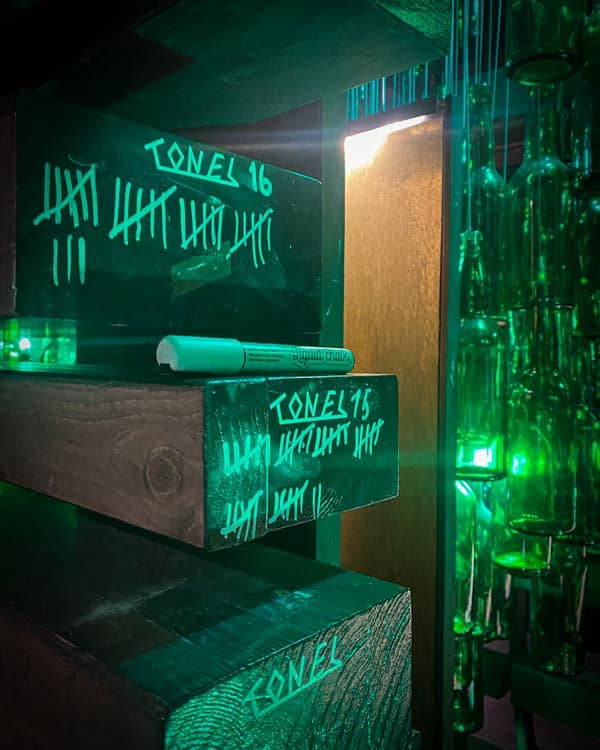
Day two: things to do in Oviedo
Sunday’s focus is all about stepping back in time. Discover some of Oviedo’s oldest UNESCO treasures, and get beyond the city limits and into the green exterior.
Morning: Visit the Archaeological Museum of Asturias
Free | Closed Monday and Tuesday | Accessibility: on foot only | Website
Start your day at the interactive archaeological museum (it’s closed Sunday afternoons) and learn about Oviedo’s UNESCO World Heritage Site before visiting them later in the day.
Focused entirely on Asturian archaeology, the museum isn’t the biggest, but there’s more than enough to see across the three floors. The collection of archaeological discoveries is well presented, and the setting, inside a former 16th-century monastery, adds a nice touch to the displays.
Spanning from pre-history until more recent times, the interactive elements add a nice touch to submerge you in history. The areas focused on the World Heritage Sites are particularly interesting, especially as a reference point if you visit the pre-Romanesque churches during your visit.
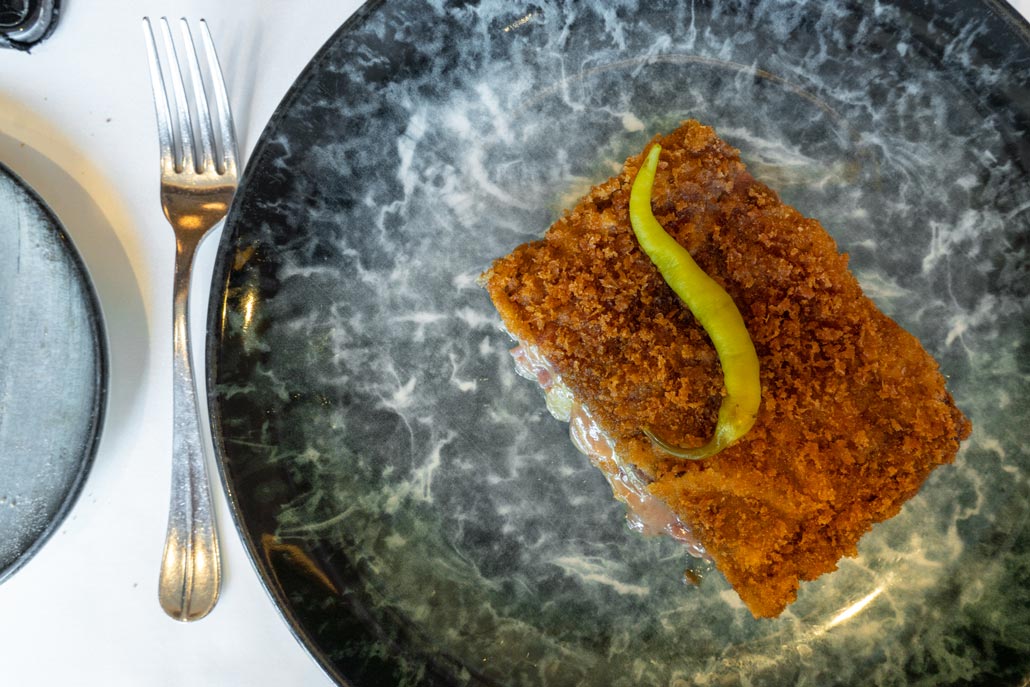
Lunch: Typical dishes at La Corte de Pelayo
One of my favourite restaurants in the city; I always make sure to enjoy a meal at La Corte de Pelayo whenever I return. While it’s a big dining space, it’s well-established and popular, so you may want to book a table in advance.
Here are a few dishes you’ll want to order to get a taste of Asturia.
Start with the Fabada asturiana, a typical stew from the region. This hearty dish is based on the famed local beans, which, as you may have seen at the market, command a premium price tag. They are then topped with meat, such as morcilla and pancetta.
I find this dish tootoo heavy as a main course, and I like that it’s offered as a smaller starter version here. The meat also comes on a separate plate for you to add, so if you’re vegetarian, I’d assume it’s not hard to ask for the dish sin carne.
For the second course, take the cachopo. For this dish, two veal steaks are stuffed with cheese and ham and then coated in breadcrumbs before frying. Is it healthy? Not really, but it sure tastes good. Opt for an Asturian wine if you want to pair the meal with a local drink that isn’t cider. The reds from Cangas are particularly good, and for an aromatic digestive, try the local Licor de Hierbas.
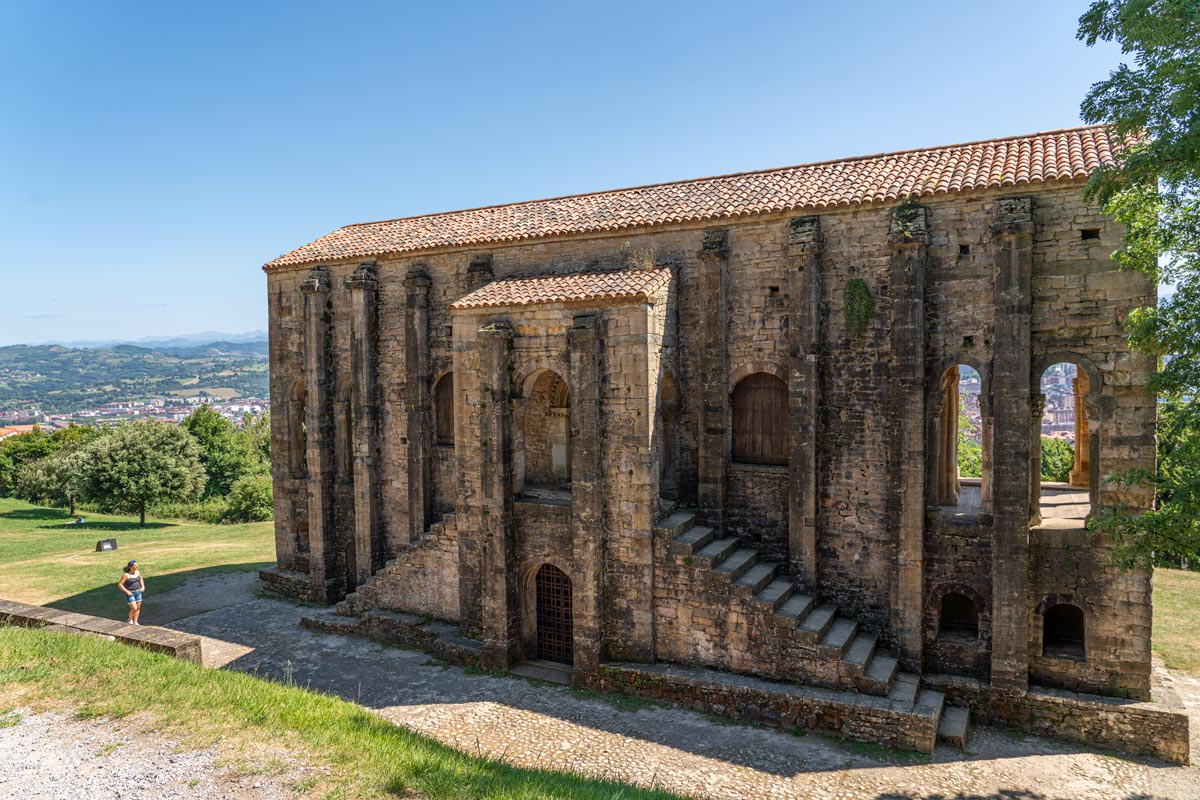
Afternoon: See the pre-Romanesque monuments
Free | Entry requires a paid tour, only available certain days | Website
On the city limits – heading towards greener pastures and the slopes of Mount Naranco – well-preserved Catholic temples provide an in situ expansion on the archaeological museum. It will take around 45 minutes to walk here, or you could hop a taxi or use the city A-C bus most of the way.
These pre-Romanesque churches are still standing proud, telling an over 1000-year-old story. While you can’t enter without a guide, you can study the facades and exterior. Heavy restoration work and reconstruction have taken place, and these are just two of the sites which make up the World Heritage-listed locations of what was once the Kingdom of Asturias.
The larger of the two, and the first you’ll arrive at, is Santa María la Real del Naranco. Impressive – for the design and distant Cantabrian Mountains background – the building was completed in 842, initially to serve as a palace.
A short walk beyond, and you’ll come to the equally as old but slightly smaller San Miguel de Lillo. On tip-toes, you can peer in the window and see some of the internal wall decorations in the space that was once King Ramiro I’s chapel. Above, the typical triple-arched windows are visible, so treasured they now form one of the modern-day logos of the Asturias region.
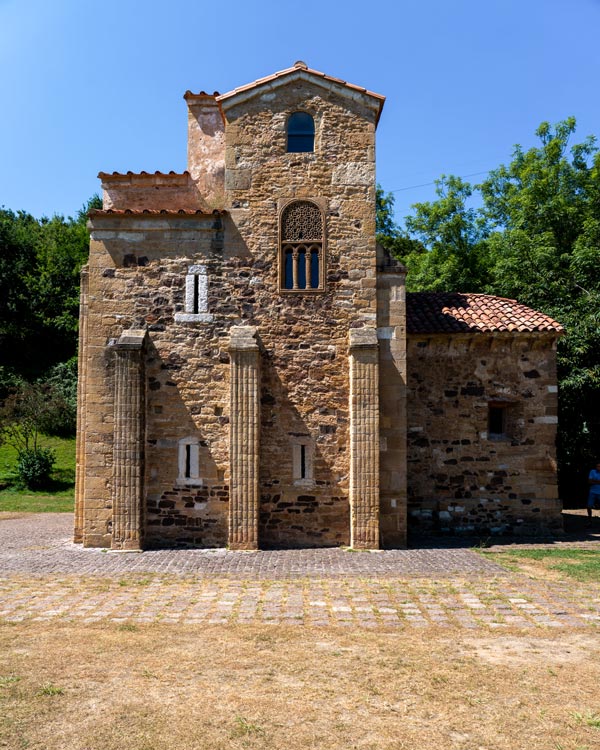
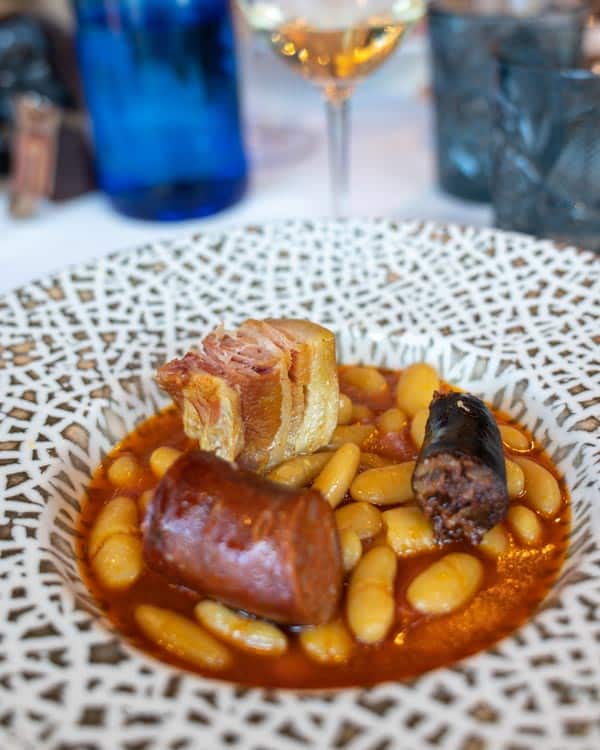
Day three: day trips from Oviedo
Once you’ve explored the city, soaked up the sidra, and spotted all the statues, make the most of your third day by exploring another part of Asturias to wrap up your long weekend in Oviedo.
Option one: the coast – Gijón
Gijón, around 30-minutes from Oviedo, is an easy day trip if you want to get to the beach. While lounging on the sands is great, there are also a few sights you could take in during your visit.
Admire the city’s Art Nouveau architecture, venture underground to the old Roman Baths, or even visit the Laboral Ciudad de la Cultura, Spain’s largest building with a difficult past.
Find some suggestions of what to do in Gijón here.
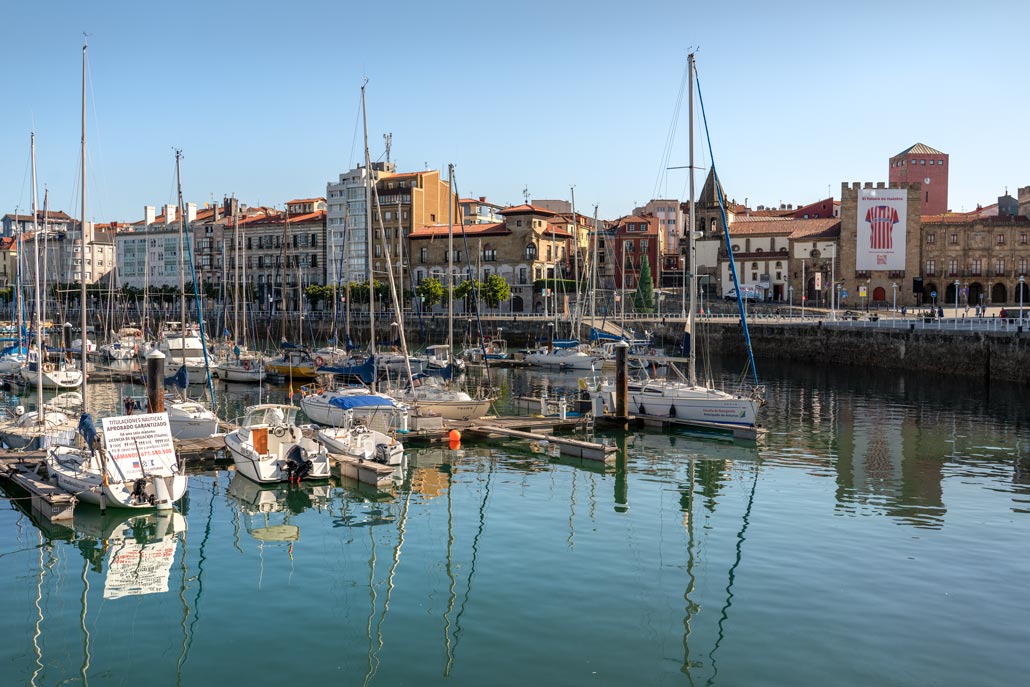
Option two: the cider and cheese – Cabrales
Asturias’s gastronomy is particularly famed for two things – cheese and sidra.
An ideal day trip from Oviedo is to go and discover them both in the verdant countryside if you have a car. While it is possible to do this by bus (with a change in Villanueva), it might be complex and lengthy as a day trip.
First, head to the caves of the Cabrales cheese – it’s around 90 minutes each way. This is one of the region’s most expensive and typical blue cheeses, though the strong flavour won’t be for everyone. In Las Arenas, you’ll find the Cueva del Queso de Cabrales museum. Here, you’ll walk through the production method and be taken inside the caves for a tasting of this award-winning blue cheese, still produced by rural farmers until this day. Be sure to check times and book ahead.
On the return, call in at a small cider-producing house – sorry, designated driver. Sidrería El Pareón is a good stop and only a slight detour off the AS-114.
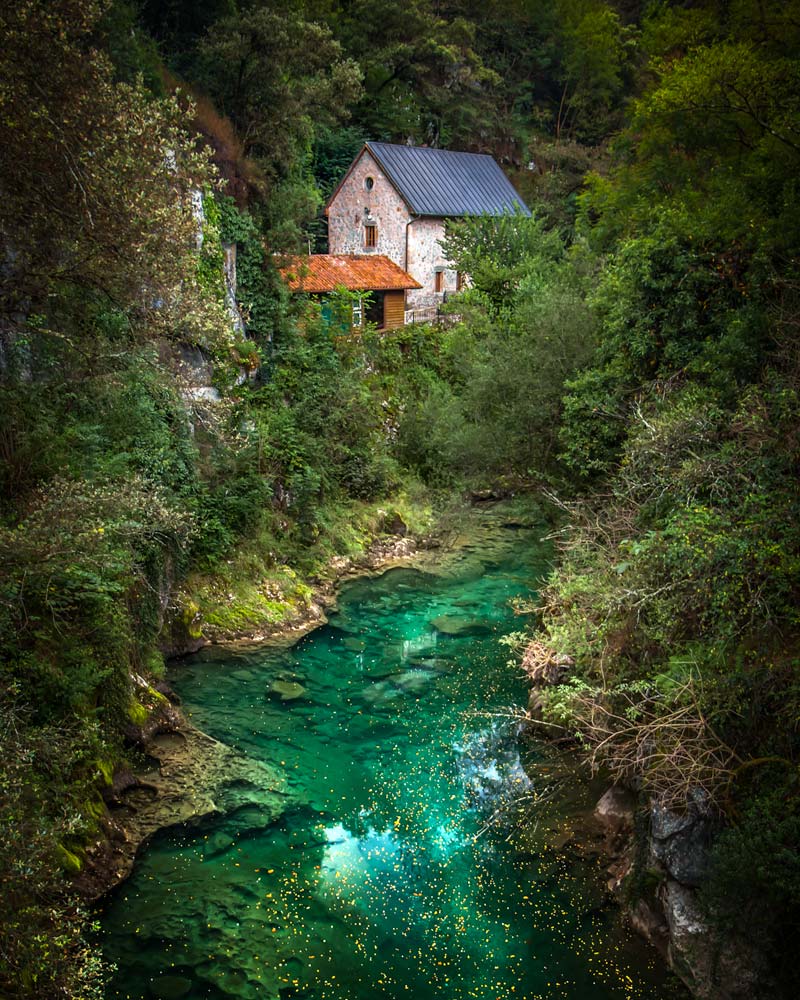
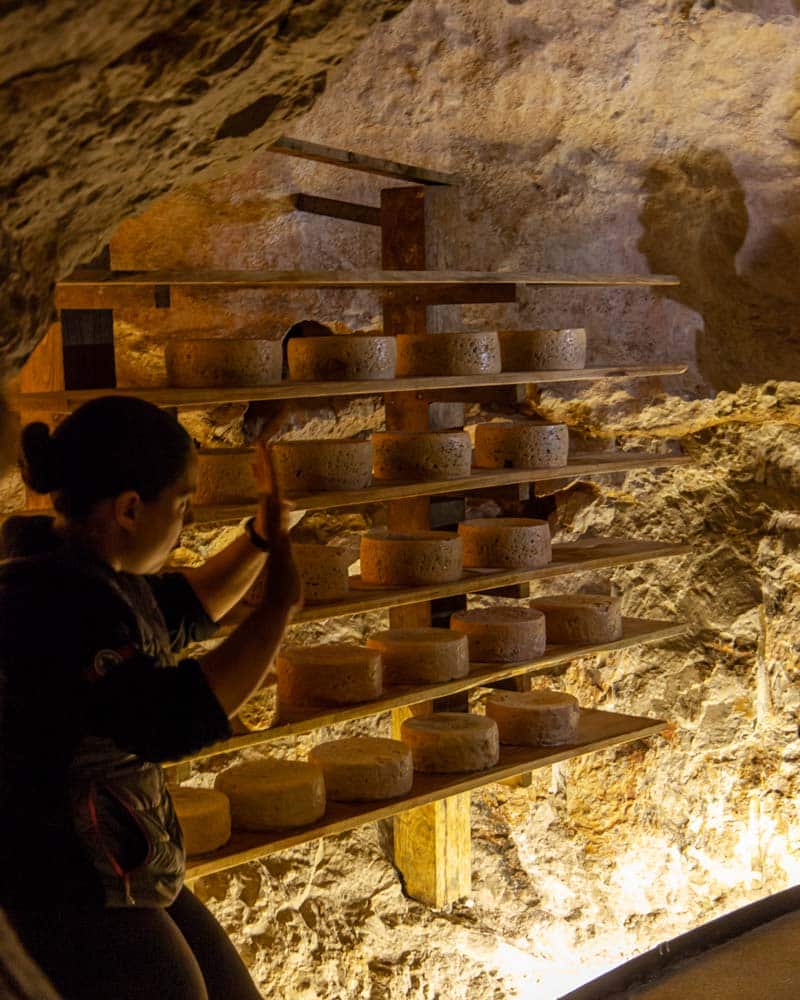
Option three: the countryside – Las Ubiñas
The lush and verdant Asturian countryside is a delight to explore, and if you want to reconnect with nature, it’s easily done.
My favourite getaway is the Picos de Europa national park. This rugged and remote mountain range is one of the most impressive in Europe, however, it may be difficult as a day trip. There are a few guided tours to the park – such as Covadonga Lakes – but be prepared for a long day.
For something a little closer, venture to Las Ubiñas. Car is easiest, but there are some access points by bus from Oviedo, such as Las Ventas.
Inside the nature park, expect jagged peaks, incredible panoramas, and blissful hiking trails. Home to some particular species – such as brown bears – the habitat is pristine and protected.
When to visit Oviedo, Spain
Having visited Oviedo in spring, summer and autumn and had surprisingly decent weather and good visits each time, I’d say it’s a nearly year-round destination. However, this is northern Spain, so I suggest avoiding the winter when showers can be more common, especially as much of Oviedo’s appeal is outside. That said, if you just want to eat and drink well, it’s a good city break any time of year.
Summer in Oviedo is also much more pleasant than in the south of Spain, where temperatures soar from June to August, and with many locals flocking to the coast, the city isn’t too overrun or hot to enjoy.
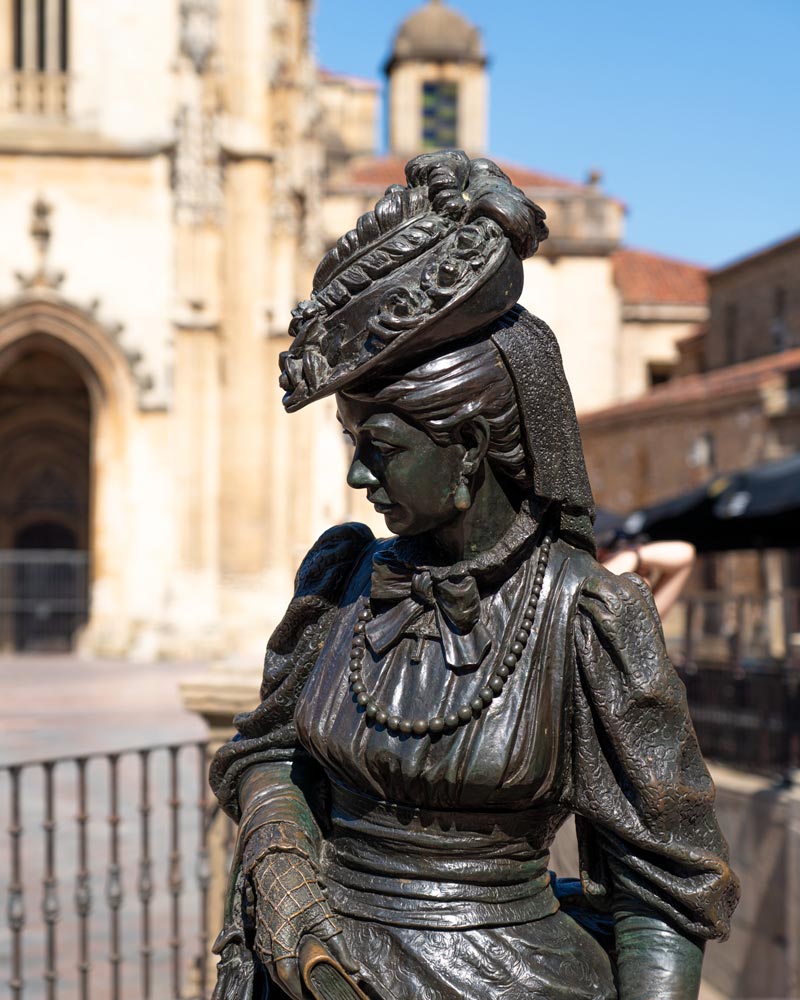
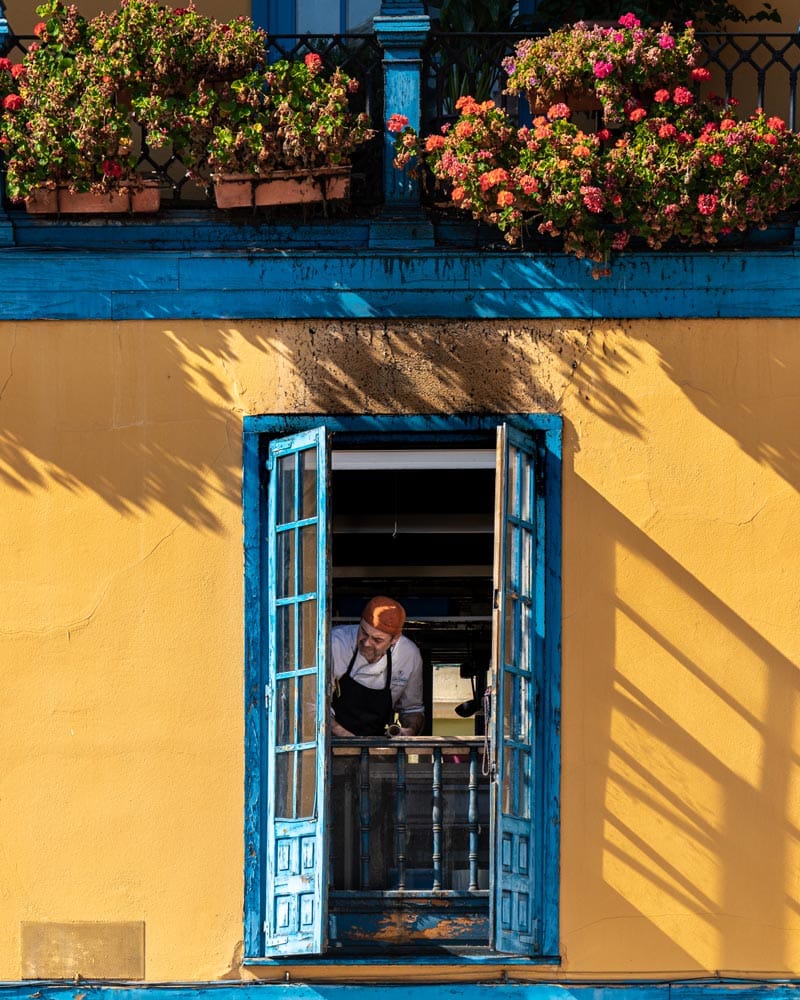
Where to stay in Oviedo, Spain
Having stayed in both mid-range and more upmarket accommodation over the years, here are a couple of my suggestions.
Budget(ish) – Duerming Longoria Plaza Hotel Oviedo doesn’t have too much budget accommodation, but this spot is pretty affordable for a private room in a decent location. I stayed here on my first visit to Oviedo, and the fair prices and clean rooms make it a reliable pick.
Mid-range – Gran Hotel España This hotel far exceeds the price. Great value, especially if you can get one of the top floor rooms with a little balcony – ideal for a sunny day. Modern and well-decorated rooms with coffee machines, a decent hotel breakfast, and a small lounge bar. I was very happy here on my most recent visit.
Luxury – Barceló Oviedo Cervantes I haven’t stayed at this Barceló, but their hotels have always delivered great service, clean and well-designed rooms, and a calming atmosphere in other cities, so I’m sure this is a great pick if you want a more premium stay.
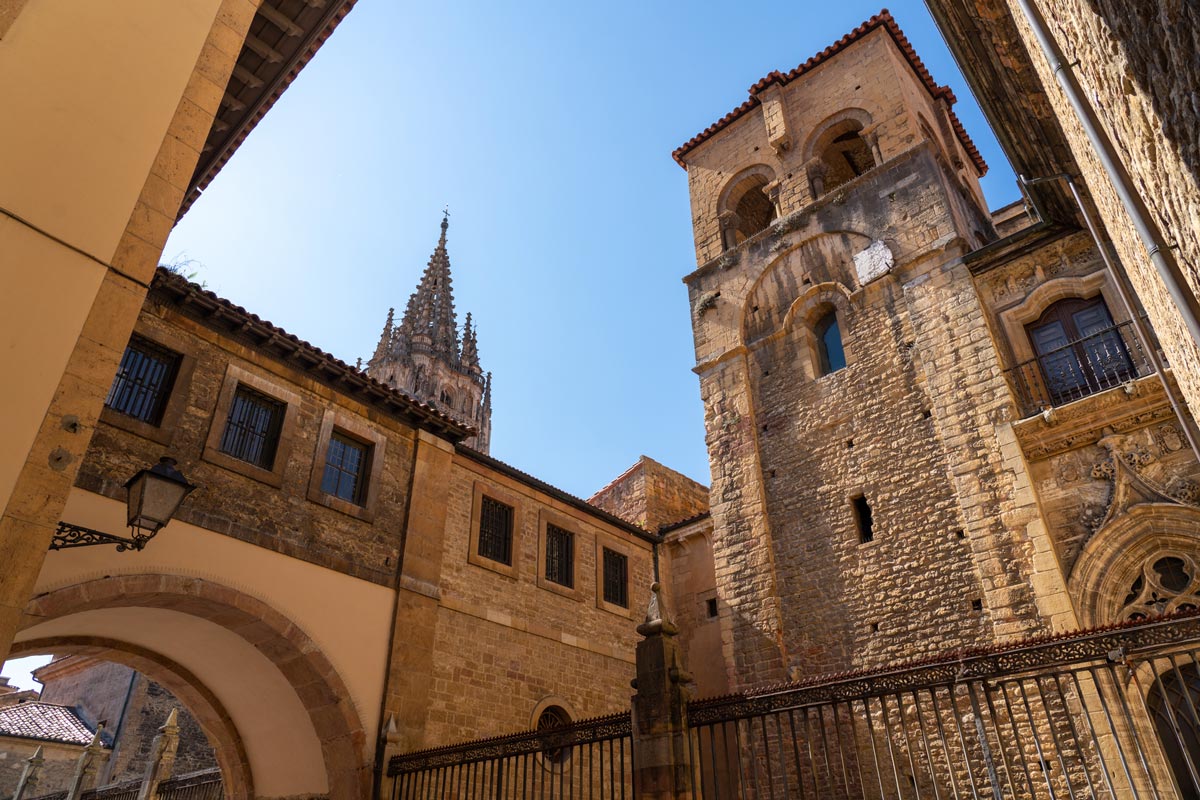
How to get to and around Oviedo, Spain
Oviedo’s centre is pretty compact and flat, so exploring on foot is the way to go. You can also walk out to the out-of-city churches, although this is quite the stroll – the city’s bus network can reduce that walking time significantly.
Travelling to Oviedo by train and public transport
If you’re coming to Asturias from elsewhere in Spain, then the train service is likely the best connection for your weekend in Oviedo. Buses are also a decent alternative. From Madrid, the journey by train takes around 4-5 hours on Renfe’s high-speed rail service, with direct connections, although sometimes a change in
Train tickets, especially for long-distance journeys, which you should book in advance, can be made directly on the Renfe website (usually cheaper) using one of the popular and best travel apps, such as Omio. ALSA is the leading bus company for intercity travel in Spain, and the journey from Madrid takes around the same time and provides an alternative.
BlaBlaCar, a car-share service (where you book a spare seat in the car of someone already making a journey), is also very popular in Spain and worth checking out if you struggle to find a direct connection from your starting point.
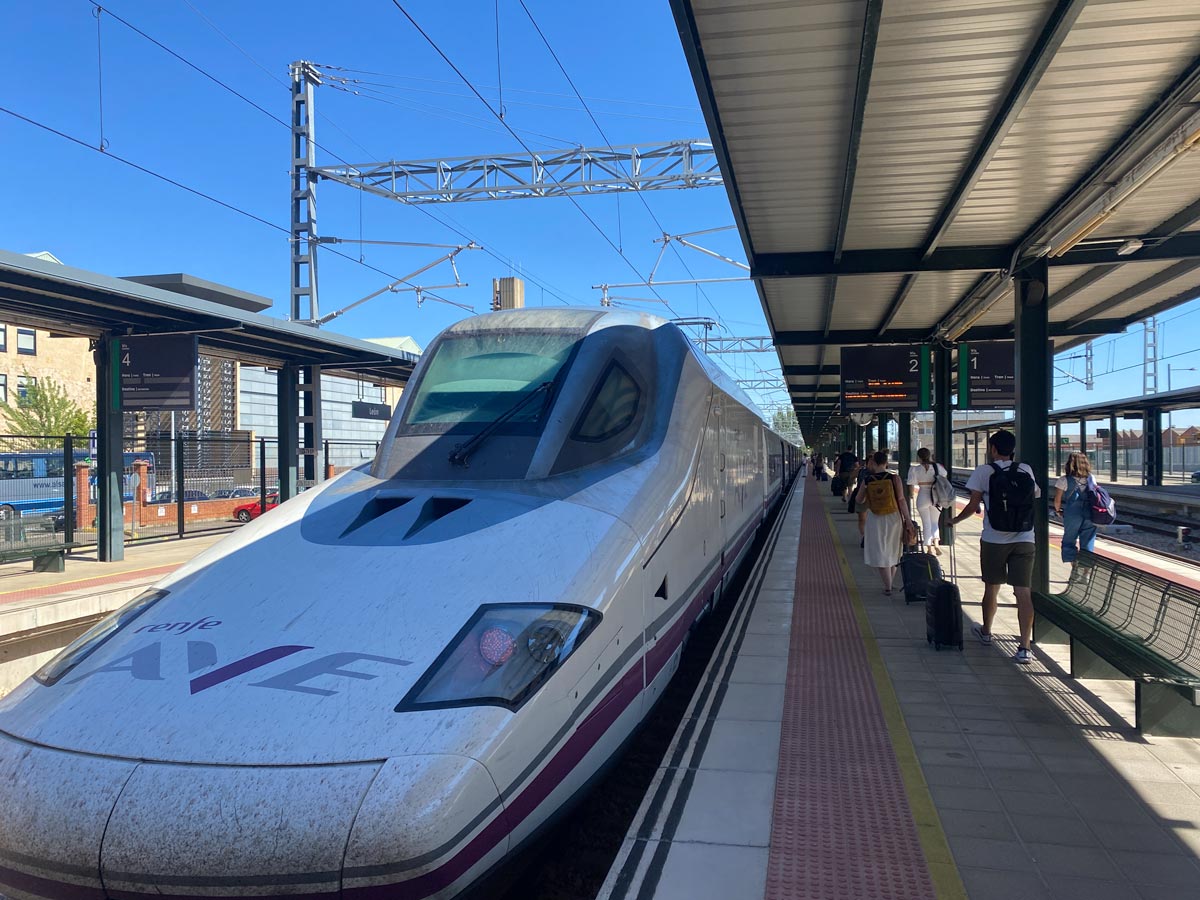
Travelling to Oviedo by plane
The nearest airport to Oviedo is Asturias Airport, a 40 minute journey by bus from the city. Currently, there are limited flights from this airport, including from London, however the schedules have been growing rapidly each year.
Travelling to Oviedo flight free from the UK
If you want to visit Northern Spain from the UK without flying, you have two options. Though personally, I suggest with this type of journey you plan to spend at least 7 days in Spain to make this trip worthwhile.
The first is to take the Eurostar to London, and from there, the train to Bayonne. To cross from France to Spain, you can opt for a two bus connection via Bilbao (likely slightly cheaper). You can expect this route to take around 16-hours if timed well.
An alternative is to take the ferry from the UK, operated by Brittany Ferries, either departing Portsmouth or Plymouth (though some sailings are only in summer), and arriving in Santander or Bilbao. Both journeys involve two nights aboard the ship. From either arrival point, you can continue by car if driving, pick up a rental car, or take an ALSA bus, which will take between two and four hours.
If returning the same way, you might want to consider spending a night in San Sebastian before sailing back, another enchanting coastal destination with one of the best culinary scenes in the county.
Where to travel after Oviedo
After your weekend in Oviedo, it’s easy to continue your journey to Gijon on the Asturian coast, head south to the architecture-studded city of León, or take the train to one of the many other best places to visit in Spain.
This article was written following my #SpainByTrain trip in autumn 2022 in partnership with Spain Tourism and Asturias Tourism.




Leave a Reply
Want to join the discussion?Feel free to contribute!